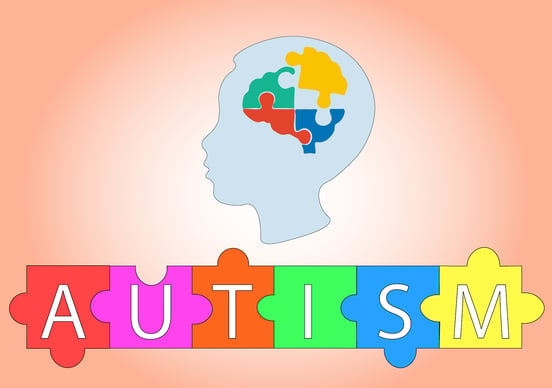Curriculum Blog
Home Learning for Children and Young People on the Autistic Spectrum

The “autistic spectrum” represents a wide range of specific but interrelated abilities, needs and challenges and there is no “one size fits all” way to approach education in the current climate. Some kids will have been able to take the change to their usual routine in their stride (no school, woo hoo!), others will be finding it devastating and then there will be those who are somewhere between these two extremes. We are all having to change our roles and routines in order to adapt to the circumstances. As parents, carers and educators we each know our individual pupils best and what will work for them, but there are some general rules of thumb outlined below that could help make the prospect of educating someone with ASD/ASC at home as positive as possible.
Nothing is more important than your family’s safety, mental health and wellbeing
Education is important of course; however, if attempting to complete school work is causing stress, anxiety or meltdowns, it needs to take a back seat until you are on top of that. Many autistic children have an incredibly strong emotional dividing line between home and school. Blurring that line may require some preparation, time and patience. This doesn’t mean that educating at home won’t work but until a new plan is set, your families health, safety and wellbeing trump everything else.
Top tip: Get a consistent daily and weekly routine (see point 2), in terms of challenging behaviour, put primary and secondary prevention plans in place (see point 3).
Establish a Consistent, Structured Routine But Build in a Little Flexibility

It looks like many of us are going to be spending most of our time at home for a while yet. Some young people I know, might be able to spend weeks, months or even years doing the one thing they love most of all. Allowing some time for this is something I’d encourage but for a number of reasons, keeping a routine that includes some balance is really important: A bit of what they like, a bit of what their school wants them to do and a bit of helping you around the house. There is no correct mix or set of activities but keep in mind the following:
- Normal life will resume at some point and it will be harder to get back in to routines if a young person is out of practice.
- One person trying to control the whole household to fit their agenda just isn’t going to be healthy or sustainable in these circumstances. An agreed routine actually gives everyone a little more control over what is happening at home.
- Everything is different right now. You need to establish your child’s “new normal” as quickly as possible. A consistent routine turns uncertain into predictable and this will help to reduce stress and anxiety.
- Build in some flexibility. If it’s all going wrong, then you can come away from the plan but get back to it as soon as everything calms down a bit. Also build some free choice into the day e.g. time for maths (we can do the worksheet, the online game etc.).
Top tip: Visuals! (Timetables, schedules, choosing boards, now next boards) Variety is the spice of life, allow time for special interests and if possible join in with these!
Dealing with Challenging Behaviour
For some people, dangerous challenging behaviour is rare whilst for other families it will sadly be part of day-to-day life. There is no quick fix but your child’s school should have an individualised behaviour support plan they use as their guide to deal with such situations. Hopefully this has already been shared with you, but if not here are some ideas to consider.
- Structure the environment. Try to create as calm an environment as possible, this might be easier said than done but it’s always worth stepping back and seeing if there is anything more you can do to reduce noise or “busyness” your young person is exposed to.
- Primary prevention plan: This is the stuff you do all the time to help avoid the young person becoming anxious, angry, overexcited etc in the first place. Most of this document could be seen as primary prevention such as meeting communication and sensory needs or having clear consistent routines.
- Secondary prevention plan: What are you going to do when it’s gone wrong. Does your child have a safe space they can go to without having to explain themselves where they can be alone, listen to calm music, play with a fidget, rip up old paper? These activities are so personalised we couldn’t even start to name them all here, but you and your young person will know what works for them. With some practice (and it won’t work every single time) it can help reduce physical aggression or damage to your home.
Supporting Communication

Again, this is something that is highly individualised but there are a few simple things to keep in mind if attempting to educate at home. If your child already has a programme/strategies they use, stick with these.
- Use visuals to support language. If you have access to symbols then use these, but if not, using images from a web search can be effective. If your child is at a school with an LGfL subscription and they have been given their USO login you have access to a huge symbol library here.
- When discussing difficult topics such as Covid19, be direct and speak factually (as much as possible).
- If supported with school work, give plenty of time to process spoken information. If you need to repeat an instruction try to repeat it as closely as possible rather than rewording it or asking in a different way; for some this is akin to asking a new question and is confusing.
- If using videos for learning, remind your child they can stop and rewind and listen again to specific bits as many times as they like.
- Discuss new or technical vocabulary. Spend some time exploring it and looking it up if needed.
Top tip: Symbols are great but other visuals such as photos or images from the Internet can help. Give time to process information.
Make it Multisensory

Multisensory learning is good for almost everyone whether a person has autism or not. Some will love getting messy and some will hate it so it’s another one that needs to be tailored to the individual. Multisensory learning is any learning that uses multiple senses in engaging ways. This could be introducing movement, song, using objects, tastes etc. LGfL have produced two resources that provide more information about multisensory learning and learning through movement.
Top tip: Activities such as baking can be a fantastic learning opportunity bringing all the senses, lots of maths, possibly history or geography see CookIT for some ideas.
Push For Independence
 It is the most natural thing in the world to want to help someone
It is the most natural thing in the world to want to help someone
who is finding something difficult. It is easy,
therefore, to blur a line between appropriate support for learning and taking away opportunities to develop independence. It is important to keep in mind that the point of most education activities is to learn and not simply to get it done. Completing a task quickly and neatly without mistakes does not mean more was learned than one that took a few goes and ended up less than perfect.
Top tip: Don’t give answers, break the question down, ask smaller questions to use as stepping stones to the answer, use sentence scaffolding, encourage them to find answers for themselves even if that involves searching the Internet.
Let's Take Opportunities to Make Learning Fun

Nearly everyone learns best when they are interested in what they are learning and having fun. Learning at home offers a rare opportunity to really make the most of fun learning opportunities with your child. Baking, light DIY, creative projects, coding there are so many opportunities to spend some time using the things your child enjoys most and using them to learn all sorts of lessons. One of the easiest things you can work on through your child’s interests are communication skills. If your child loves to play a particular game get them to show you how to play too. In teaching you the thing they love, they will be learning fantastic communication skills. It’s also a wonderful opportunity to bond over something your child cares deeply about.
Top tip: Use your child’s interests as a “hook” for learning. Top Trumps cards can be an amazing tool as they are inexpensive and cover almost every interest you can imagine. They can easily be used to cover art, maths and English and computing topics. “Sandbox” activities that offer an open ended medium to create such as Lego or Minecraft can be used for practically any lesson topic you can imagine.
There is a lot of support and advice available to support learners with SEND, many schools and SENCOs are keeping in regular contact with the families they support and lots of local authority learning support teams are still operating. The major charities have also set up some excellent sources of information including The NAS. There is a lot of help out there and you aren't alone. If you need further advice or have questions please comment to this post or contact us on inclusion@lgfl.net.
If you have any further top tips to share please do let us know by posting them on LGfL’s Twitter or Facebook pages.
